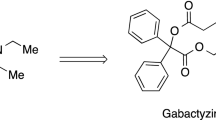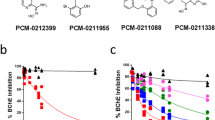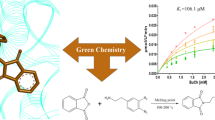Abstract
Recently, several experimental K-oximes with two functional aldoxime groups have been synthesized that show excellent in vitro efficacy in protecting acetylcholinesterase (AChE) from inhibition by a broad variety of organophosphorus compounds (OPCs). However, oximes themselves are also AChE inhibitors, albeit at higher concentrations, which is a major cause of their toxicity and may be a dose-limiting factor in oxime therapy. To assess the efficacy of the experimental K-oximes in vivo, the extent of oxime-conferred protection from mortality induced by paraoxon was quantified. Rats received paraoxon in a dosage of 1, 5, or 10 μmol, and immediately thereafter intraperitoneal injections of the respective oxime at a dosage of half the LD01. The relative risk of death (RR) over time was estimated by Cox survival analysis for treatment with experimental K-oximes (K-53, K-74, K-75, K-107, K-108, and K-113), with the clinically available oximes pralidoxime (2-PAM) and obidoxime, and with the well-characterized K-oximes K-27 and K-48, comparing results with the no-treatment group. Best protection was conferred by K-27, reducing the RR to 20% of controls (P ≤ 0.05), which was significantly (P ≤ 0.05) better than all other tested oximes. Marked reduction in mortality was also achieved by K-48 and the three new bispyridinium oximes containing two aldoxime groups, but no xylene linker: K-48 (RR = 0.32), K-53 (RR = 0.36), K-74 (RR = 0.42), K-75 (RR = 0.35). This effect was significantly (P ≤ 0.05) superior to that of all other oximes, except K-27. The remaining oximes, i.e., obidoxime (RR = 0.64), 2-PAM (RR = 0.78), K-107 (RR = 0.70), K-108 (RR = 0.77), and K-113 (RR = 0.87) reduced paraoxon-induced mortality only poorly, but significantly (P ≤ 0.05). Our data show that K-27, K-48, K-53, K-74, and K-75, due to their far superior in vivo efficacy, are the most promising candidates to eventually replace the established oximes 2-PAM and obidoxime. Further studies in other species exposed to a broader spectrum of OPCs are, however, necessary before considering their use in humans.


Similar content being viewed by others
References
Buckley NA, Eddleston M, Dawson AH (2005) The need for translational research on antidotes for pesticide poisoning. Clin Exp Pharmacol Physiol 32:999–1005
Cox DR (1972) Regression models and life tables. J R Stat Soc B 34:189–220
Eddleston M, Buckley NA, Eyer P, Dawson AH (2008) Management of acute organophosphorus pesticide poisoning. Lancet 371:597–607
Eyer P (2003) The role of oximes in the management of organophosphorus pesticide poisoning. Toxicol Rev 22:165–190
Johnson MK, Jacobsen D, Meredith TJ, Eyer P, Heath AJ, Ligtenstein DA, Marrs TC, Szinicz L, Vale JA, Haines JA (2000) Evaluation of antidotes for poisoning by organophosphorus pesticides. Emerg Med 12:22–37
Kassa J, Humlicek V (2008) A comparison of the potency of newly developed oximes (K074, K075) and currently available oximes (obidoxime, trimedoxime, HI-6) to counteract acute toxic effects of tabun and cyclosarin in mice. Drug Chem Toxicol 31:127–135
Kassa J, Kuča K, Cabal J, Paar M (2006) A comparison of the efficacy of new asymmetric bispyridinium oximes (K-27, K-48) with currently available oximes against tabun by in vivo methods. J Toxicol Environ Health A 69:1875–1882
Kuča K, Jun D, Bajgar J (2007a) Currently used cholinesterase reactivators against nerve agent intoxication: comparison of their effectivity in vitro. Drug Chem Toxicol 30:31–40
Kuča K, Cabal J, Jun D, Musilek K (2007b) In vitro reactivation potency of acetylcholinesterase reactivators—K074 and K075—to reactivate tabun-inhibited human brain cholinesterases. Neurotox Res 11:101–106
Lorke DE, Hasan MY, Nurulain SM, Sheen R, Kuča K, Petroianu GA (2007) Entry of two new asymmetric bispyridinium oximes (K-27 and K-48) into the rat brain: comparison with obidoxime. J Appl Toxicol 27:482–490
Lorke DE, Hasan MY, Nurulain SM, Kuča K, Schmitt A, Petroianu GA (2008a) Efficacy of two new asymmetric bispyridinium oximes (K-27 and K-48) in rats exposed to diisopropylfluorophosphate (DFP): comparison with the established oximes pralidoxime, obidoxime, trimedoxime, methoxime and HI-6. Toxicol Mech Method (in press)
Lorke DE, Hasan MY, Arafat K, Kuča K, Musilek K, Schmitt A, Petroianu GA (2008b) In vitro oxime reactivation of red blood cell acetylcholinesterase inhibited by diisopropyl-fluorophosphate (DFP). J Appl Toxicol 28:422–429
Lorke DE, Hasan MY, Nurulain SM, Kuča K, Kassa J, Petroianu GA (2008c) Eight new bispyridinium oximes in comparison with the conventional oximes pralidoxime and obidoxime: in vivo efficacy to protect from diisopropylfluorophosphate (DFP) toxicity. J Appl Toxicol 28(7):920–928
Lorke DE, Kalasz H, Petroianu GA, Tekes K (2008d) Entry of oximes into the brain: a review. Curr Med Chem 15:743–753
Musilek K, Kuča K, Dohnal V, Jun D, Marek J, Koleckar V (2007a) Two step synthesis of a non-symmetric acetylcholinesterase reactivator. Molecules 12:1755–1761
Musilek K, Holas O, Kuča K, Jun D, Dohnal V, Dolezal M (2007b) Synthesis of a novel series of non-symmetrical bispyridinium compounds bearing a xylene linker and evaluation of their reactivation activity against tabun and paraoxon-inhibited acetylcholinesterase. J Enzyme Inhib Med Chem 22:425–432
Petroianu GA, Kalasz HJ (2007) Comparison of the ability of oximes to reactivate human RBC cholinesterases inhibited by ethyl- and methyl-paraoxon. Curr Org Chem 11:1624–1634
Petroianu GA, Nurulain SM, Nagelkerke N, Al-Sultan MA, Kuča K, Kassa J (2006) Five oximes (K-27, K-33, K-48, BI-6 and methoxime) in comparison with pralidoxime: survival in rats exposed to the organophosphate paraoxon. J Appl Toxicol 26:262–268
Petroianu GA, Nurulain SM, Nagelkerke N, Shafiullah M, Kassa J, Kuča K (2007a) Five oximes (K-27, K-48, obidoxime, HI-6 and trimedoxime) in comparison with pralidoxime: survival in rats exposed to methyl-paraoxon. J Appl Toxicol 27:453–457
Petroianu GA, Hasan MY, Nurulain SM, Nagelkerke N, Kassa J, Kuča K (2007b) New K-oximes (K-27 and K-48) in comparison with obidoxime (LuH-6), pralidoxime, HI-6 and trimedoxime (TMB-4): survival in rats exposed to the organophosphate paraoxon. Toxicol Mech Method 17:401–408
Petroianu GA, Lorke DE, Hasan MY, Adem A, Sheen R, Nurulain SM, Kalasz H (2007c) Paraoxon has only a minimal effect on pralidoxime brain concentration in rats. J Appl Toxicol 27:350–357
Worek F, Reiter G, Eyer P, Szinicz L (2002) Reactivation kinetics of acetylcholinesterase from different species inhibited by highly toxic organophosphates. Arch Toxicol 76:523–529
Worek F, Eyer P, Aurbek N, Szinicz L, Thiermann H (2007) Recent advances in evaluation of oxime efficacy in nerve agent poisoning by in vitro analysis. Toxicol Appl Pharmacol 219:226–234
Acknowledgments
The authors wish to thank Shobha Duncan for her assistance in preparing the manuscript. The study was supported by the Ministry of Defense of the Czech Republic (project number: FVZ0000604).
Author information
Authors and Affiliations
Corresponding author
Rights and permissions
About this article
Cite this article
Nurulain, S.M., Lorke, D.E., Hasan, M.Y. et al. Efficacy of Eight Experimental Bispyridinium Oximes Against Paraoxon-Induced Mortality: Comparison with the Conventional Oximes Pralidoxime and Obidoxime. Neurotox Res 16, 60–67 (2009). https://doi.org/10.1007/s12640-009-9048-7
Received:
Revised:
Accepted:
Published:
Issue Date:
DOI: https://doi.org/10.1007/s12640-009-9048-7




